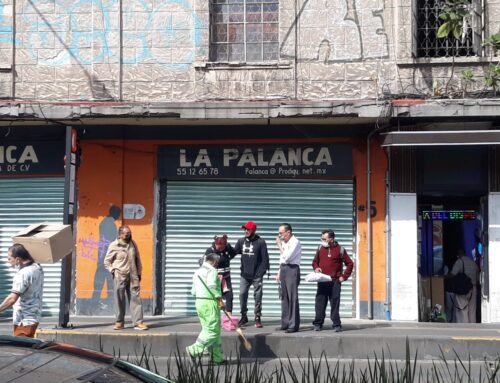Americans like believing that the solution to every social and economic problem is job training. Outsourcing? Job training. Economically depressed neighborhoods? Job training. Impoverished single mothers? You guessed it.
We’re job training ourselves silly. We even have a bill in Congress called the Seniors Offering Quality Child Care Act, HR 335. Why should all those seniors sit around enjoying their own families and grandkids? They can be “trained” to work in day care centers. While this bill makes me feel sorry for seniors, my biggest concern is Americans on welfare (also known as Public Assistance or Temporary Assistance to Needy Families), because most government funded job training is reserved for them, and it’s compulsory.
Job training has nearly replaced cash assistance in U.S. poverty programs. Although no state’s cash assistance payment reaches 50 percent of the federal poverty line ($18,530 for a family of three), every state spends federal poverty funds on job training, and the things that people need because they are in training, like child care. This transition hasn’t gone well, not fiscally, not socially. In Ohio, where a family’s welfare payment reaches to only 30% of the poverty line, hundreds of millions of federal dollars intended for poor people sat unused because the state said it did not have enough job training to spend the money on. Their commissioner of social services, Jack Frech, wanted to use the money to increase monthly cash assistance right to families, but other administrators and legislators balked. California has had similar gluts where anti poverty funds piled up because of the state’s insistence that they be used for job training. Hawaii and New Jersey have done evaluations of some of their job trainings, finding them unaccountable and ineffective.
We fund them, but we don’t even know what people learn in them, though being a social worker, I have an idea. A mother on welfare I know used to fill me in about her job training in the Bronx. One day, the Job Training Specialist made all the participants get down on the floor and do sit-ups—in their work clothes. The trainer promised this would build their character. The moms say all it did was give them a dry cleaning bill to pay. There is not an “approved job training” program for welfare recipients that teaches anything one did not learn in high school or that one cannot already purchase on the open market, of better quality. How many times can the state pay for a worker to re-write his resume? Apparently, as many times as he can get the federal government to pay for.
Neither Democrats nor Republicans have talked about the waste of funds on job training at any point in the budget discussions. In 2009, the NYC Independent Budget Office studied a job training program called Back to Work. It said that Back to Work spent $53 million in 2008. It began with 143,000 clients, and after using human resources to “screen” them, reduced the pool to 58,000. The 58,000 (mostly women with young children) went through job training. ONLY 15,000 OF THEM WERE GIVEN A JOB OF ANY KIND AT THE END OF TRAINING. And 5,337 people, or 9.4 percent, were still in those jobs six months later. New York City spent $10,000 per participant, excluding their wages. This makes as much sense as paying a headhunter $10,000 to find you a job in Walmart. Rather than ending Back to Work, it has been funded every year since.
Let’s imagine a different use of the funds: Use these dollars to raise the cash assistance grant. Even cashing out Back to Work alone could free up $437 a year to every one of our state’s 134,903 families who receive welfare. Why should we do this? In none of our New York’s counties is the cash assistance payment higher than 50% of the poverty line—about $700 a month maximum for a family of three. Even with Food Stamps, this family lives on an income of $15,000 a year.
Raising families’ incomes instead of forcing them to participate in job training would save public money in several areas. As families were able to meet their basic needs, they would be evicted less often (less need for shelters), and have better and more food (less illness, reduced Medicaid costs). They could buy a book for their kids (better school performance); or take time to have dinner together (less teen drug use). Job training does not raise families’ incomes, only real jobs may do that. Absent real jobs, only direct cash aid can do that.
Job training does not create any condition that will in turn create actual jobs. When job training/subsidized jobs are over, the participants are right back where they started. It is a fact that last month, our only national job growth came from a hiring campaign at McDonald’s. Yet there are job training programs of all sorts, unrelated to food service, all over the nation, that have been going on for over a decade under Welfare Reform. If job training spurred jobs, we’d have new employment sprouting up all over, including in New York. Yet this is not the case.
Using funds currently used for job training to give a little more direct cash assistance to families would create jobs, as demand for goods and services came about naturally from people having more money. Five extra dollars given to one of us will immediately be spent in the economy.
This is social policy.







Leave A Comment